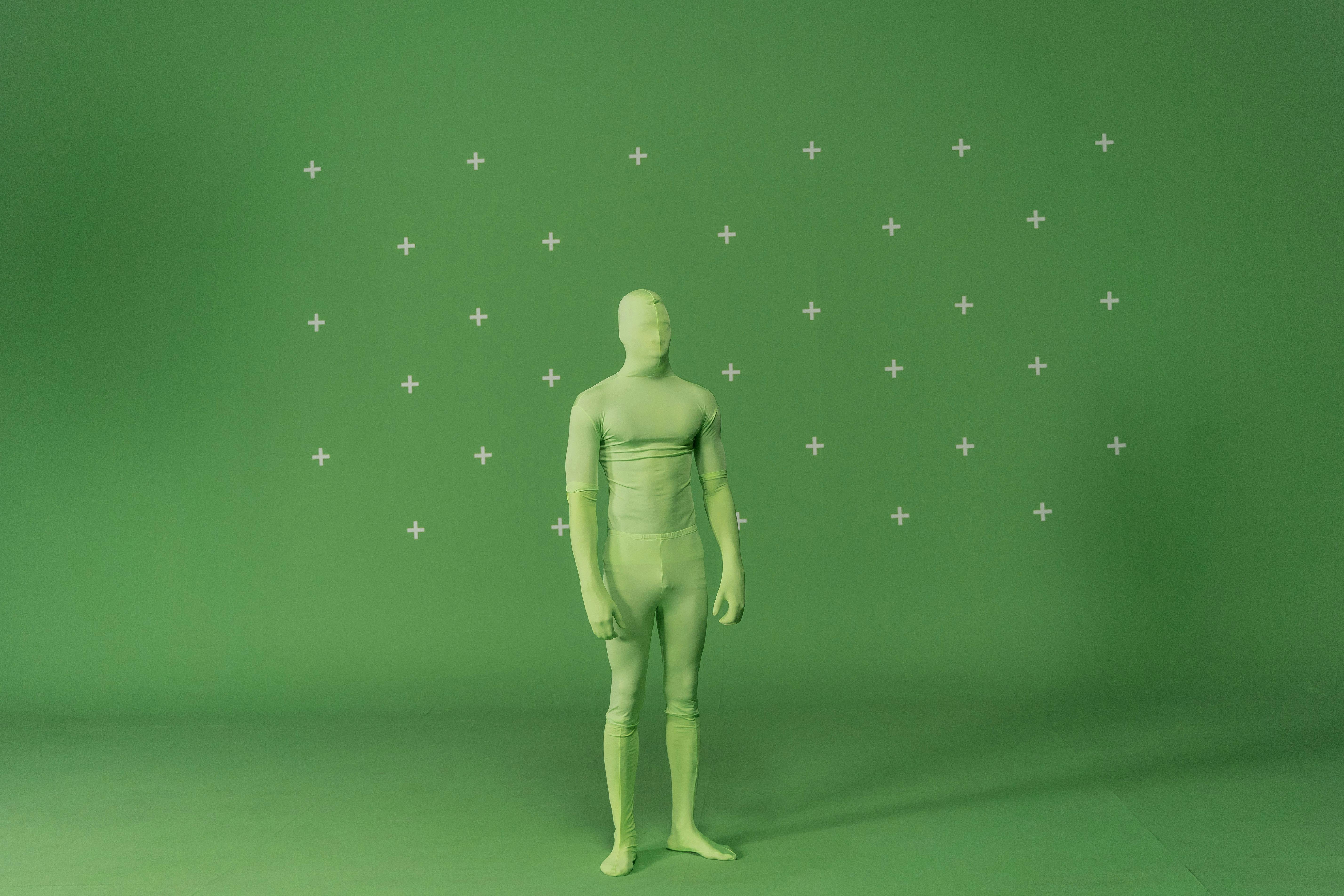
Here at Hurricane, we have been spending a lot of time in the studio working on projects that require green screen or chroma keyed shots. It dawned on us that we should construct a brief guide which could serve as a little introduction to the basics of green screen and some the tricks and tips we have found useful over the last few years.
What is it?
Think this definition sums it up nicely:
Chroma key compositing (or green/blue screen) is a technique for compositing two images or frames together in which a colour from one image is removed or made transparent, revealing another image behind it.
Why so green?
It’s a common question, and luckily one that is easily answered. The two most common colours used for chroma key are blue and green, this is due to the fact that they are the colours furthest away from human skin tone. This means you don’t risk cutting off an actor’s hand when you come to remove the background!
Green has been favored more commonly over blue in recent times due to the fact that it is less commonly found in both eye colour of actors and clothing (think of all those invisible baby blues and levis!)
How?
The basic premise is that the subject or actor is filmed situated against a green background or in a green infinity studio. The most important thing is that the subject is completely surrounded by green and that the green colour is as consistent as possible. This shot footage is then taken into an edit suite and we process the footage to remove all of the green leaving us the ability to place our actor on any background we wish.
So that’s the basic premise and we have used it for a variety of applications across our many projects, but what are the key points which can help you on your way to ensuring you get that fantastic crisp key you need to wow your audience. Well in this post I will outline a few key tips to get you on your way.
Crying over spilt key!
One of the major things to avoid when shooting green screen is green spill on the actor or subject. Anything from the lighting being incorrectly set up to shiny surfaces or kick back from the studio floor can cause this annoying problem. It might prove difficult to solve later in the edit so here are some ways to avoid it from the start.
- If possible try to avoid reflective or shiny items of clothing on the actor or subject including sunglasses, spectacles, polished shoes, shiny fabrics and reflective jewellery.
- If you are getting green kick back from the floor then try adjusting your lighting.
- If it’s still a problem then you can lay black drape around areas of the floor the actor is not interacting with to avoid the reflection. These can be garbage matted out later in post-production.
The shadows
The best type of lighting set up for green screen is as even as you can possibly get it. It’s always good to get as much modeling on the actor or subject as possible but the main things to avoid are shadows.
Shadows can cause major problems when trying to get a clean key, as the editing software you are using will try to look for a specific color range and the shadow will be too dark to replace easily.
Hair and make-up and wardrobe
Most professional hair and make-up artists will be well versed in setting up an actor for green screen shoots but as a note obvious things to look out for are:
- Avoid flyaway hair. This can be solved with some ultra hold hair spray.
- Regularly apply powder to avoid reflection and shine on the face.
- Ensure the actors are dressed in the correct colors (no green at all!). Also some striped clothes can be a problem as the edges of the clothing may tend to cause the footage to strobe when cut out. Normally best to avoid if possible.
On-site edit
If your budget allows it, it can be a good idea to have an editor with the edit suite on-site so that you can take some of your footage and check your key there and then. This can be done by importing a couple of clips into your software of choice and taking a very quick rough key to establish that the set up is working.
Not only does this avoid the fear of walking away with an unsatisfactory product but can also be useful to check how the actor or subject looks in front of your chosen background colour or image.
That’s it for now but we’ll be back with some more tips on this soon so bookmark us for all your production know-how needs.
Happy keying!
Ready to elevate your video production with stunning green screen techniques? Contact us today to learn how our expertise can bring your vision to life! Whether you’re looking for professional tips, state-of-the-art equipment, or full-service video production, Hurricane has you covered. Let’s create something amazing together!


